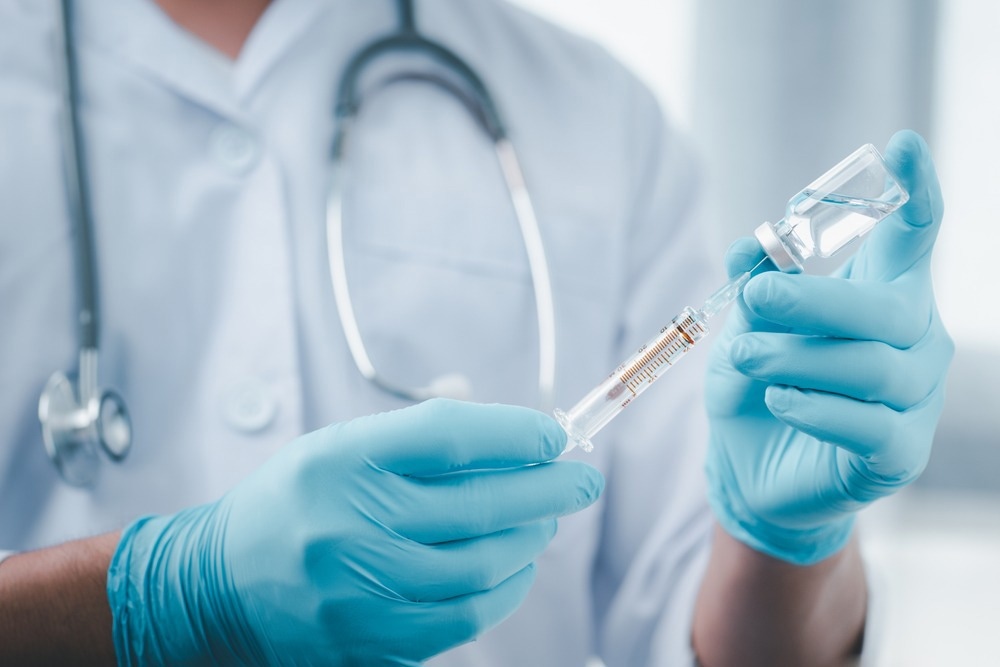In a recent study in Vaccine, researchers described simultaneous vaccination (SV) with primary series severe acute respiratory syndrome coronavirus 2 (SARS-CoV-2) vaccines. They assessed 23 pre-determined health outcomes following SV among individuals aged five years and above in the Vaccine Safety Datalink (VSD).
 Study: Safety of simultaneous vaccination with COVID-19 vaccines in the Vaccine Safety Datalink. Image Credit: LookerStudio/Shutterstock.com
Study: Safety of simultaneous vaccination with COVID-19 vaccines in the Vaccine Safety Datalink. Image Credit: LookerStudio/Shutterstock.com
Background
Coronavirus disease 2019 (COVID-19) has caused unprecedented morbidity and mortality across the globe, in response to which COVID-19 vaccines and anti-SARS-CoV-2 therapies, such as monoclonal antibodies were developed to mitigate the disease and reduce its global burden on healthcare facilities.
In the initial two years of the United States (US) SARS-CoV-2 vaccination program, the US Food and Drug Administration (US FDA) authorized three monovalent SARS-CoV-2 vaccines for emergency use to provide primary vaccination: Pfizer-BioNTech’s BNT162b2, Moderna’s mRNA-1273, and Janssen’s Ad.26.COV2.S.
Previous observational studies and clinical trials underpin simultaneous vaccinations. However, a few studies have reported increased risks of adverse events among individuals receiving SV with non-SARS-CoV-2 vaccines, e.g., Bell’s palsy among individuals aged 11 to 21 years following the meningococcal MenACWY-CRM conjugate vaccine administration and febrile seizures among pediatric recipients of the trivalent inactivated influenza vaccine (IIV3) and the 13-valent pneumococcal conjugate vaccine (PCV13) simultaneously. Further research is required to assess the safety of simultaneous vaccinations with prime monovalent SARS-CoV-2 vaccines and non-COVID-19 vaccines.
About the study
In the present retrospective cohort study, researchers described SV with US-approved monovalent primary SARS-CoV-2 vaccines and evaluated pre-determined adverse events after SV with monovalent primary COVID-19 vaccinations among individuals aged ≥5.0 years in VSD surveillance.
The team analyzed data from VSD’s SARS-CoV-2 vaccine rapid cycle analysis (RCA) surveillance between 11 December 2020 and 21 May 2022. SV frequency was analyzed by comparing the vaccination outcomes between SV recipients and non-SV recipients in the three weeks following the first dose of COVID-19 vaccines and the six weeks following the second dose by the type of SV received.
SV was described as the receipt of any non-SARS-CoV-2 vaccine (≥1.0 vaccine) on the day of the first or second doses of the primary SARS-CoV-2 vaccines, following the Advisory Committee on Immunization Practices (ACIP) guidelines. The vaccines were administered at different anatomical sites and not combined in the same syringe. Simultaneously administered vaccines were grouped to form mutually exclusive groups; e.g., all types of influenza vaccines were grouped into the “All Influenza” group.
The team used the International Classification of Diseases, tenth revision (ICD-10) codes to identify outcomes. Poisson regression modeling was performed to determine the adjusted rate ratios (aRRs) for ≥5.0 health outcomes across both vaccine doses and logistic regression modeling was to calculate the odds ratios (ORs) to identify the factors associated with receiving vs. not receiving SV with SARS-CoV-2 vaccines. Data were adjusted for participant age, sex, COVID-19 risk status, the timing of receipt of COVID-19 vaccines (i.e., before or post-21 May 2021, the day when the Centres for Disease Control and Prevention (CDC) updated their clinical guidelines on SV), and the quarter of SARS-CoV-2 vaccine receipt.
Results
Simultaneous vaccinations with SARS-CoV-2 vaccines were uncommon (0.70% of 8,455,037 individuals after the first dose and 0.3% of 7,787,013 individuals after the second dose). Most individuals (72.0%) received SARS-CoV-2 vaccines before 21 May 2021. The most commonly administered simultaneous vaccines were human papillomavirus (HPV), influenza, meningococcal, tetanus, diphtheria, and pertussis (Tdap) vaccines.
Adverse events were rare following simultaneous vaccination with SARS-CoV-2 vaccines, with only 56 outcomes reported after the first and second doses. The adverse event rates among SV recipients SV did not differ significantly from that among non-SV recipients (6.50 versus 6.80 among every 10,000 individuals).
The team observed significantly increased aRRs for seizures or convulsions (aRR 2.8) and appendicitis (aRR 2.1) among “All SV” recipients after the first vaccine dose and for Bell’s facial palsy (aRR 2.8) among “Influenza SV” recipients after the second dose. The participants were more likely to receive SV after the first dose of SARS-CoV-2 vaccines than with the second dose (OR 2.4).
The percentage of SV was the highest among children aged 5.0 to 11 years (OR 1.4), with individuals aged 5.0 to 29 years and ≥50.0 years significantly more likely to receive SV with SARS-CoV-2 vaccines than individuals aged 30 to 49 years. Further, non-Hispanic American Indians or Alaskan Natives (OR 1.2) were more likely to receive SV with SARS-CoV-2 vaccines than non-Hispanic Whites.
Conclusion
Overall, the study findings showed that the combined pre-determined events occurring among SV recipients were rare with SARS-CoV-2 vaccines and did not significantly differ from those among non-SV recipients. The aRR values were significant for a few outcomes; however, a limited number of adverse events was reported, and the data were not adjusted for multiple tests.